Kashi Vishwanath Jyotirlinga is the temple of Lord Shiva situated in Varansi, Uttar Pradesh, which holds a place amongst the twelve Jyotirlings of Lord Shiva and is of high regard. This temple built on the banks of river Ganga is of great value in terms of spirituality and history. Also called the City of Light, Varanasi is thought to be one of the oldest cities still inhabited, with Kashi Vishwanath Temple located at the center of the city.
This blog discusses the history, religious significance and tourism aspects of Kashi Vishwanath Jyotirlinga, and informs travelers, how to get the real feel of this holy place.
History of Kashi Vishwanath Jyotirlinga
Kashi Vishwasanth Temple is said to have been built around 1585 by Raja Todar Mal, one of Akbar superb navratnas. Kashi Vishwanath Temple is more ancient than its physical construction. Many ancient texts and scriptures make references to it. It has undergone several destructions from different invaders at different periods. In 1669, the Mughal emperor Aurangzeb destroyed the temple and erected a mosque known as the Gyanvapi Mosque in its place. In spite of these annihilations however, the devotion of the people in this holy city to Lord Shiva remained intact.
In 1780, the structure of the temple we see today was built by Ahilyabai Holkar of Indore. Plenty of renovations have been carried out on the temple since that time with the most recent being the Kashi Vishwanath Corridor project which has enhanced devotees’ access to the temple.
The Jyotirlinga in Kashi Vishwanath is said to bestow moksha (salvation) for those who have visited. Kashi is the city of Lord Shiva and it is believed anyone dying in Kashi gets emancipated from the cycle of rebirth. The temple is also significant with respect to the flowing Ganga that enhances the entire area’s spirituality.
Table of Contents
Significance of Kashi Vishwanath Jyotirlinga
Kashi Vishwanath Jyotirlinga is much more than a place of worship, it is the epicenter in the cosmological map. Lord Vishwanath is worshiped as the lord of the entire universe, and hence visiting this temple is also believed to cleanse one’s spirit and bestow the person with divine grace. Therefore Kashi is referred to as the ‘City of Light’, which signifies spiritual regards.
The temple assumes important character particularly during the festivals of Mahashivratri and Shravan Maas (the holy month of July-August), when millions of devotees enter the temple to worship and perform jalabhishek to the Jyotirlinga or water offering.
Kashi Vishwanath Temple tourism
The city of Varanasi or Kashi for some, is one of the oldest surviving cities on this planet. The city is a center for spiritual tourism appealing visitors not only from within India but far and wide. Useful information has been collated for the tourists who have set their minds on visiting the Kashi Vishwanath Temple:
Architectural Features of Kashi Vishwanath Temple
In spite of the small area of Kashi Vishwanath Temple, when compared to other Indian temples, its importance can be attributed to the spirituality and the history it possesses.
Jyotirlinga: In the temple of Lord Vishwanath, the primary shrine, the alleviates the holistic power of the carefully enshrined Jyoit linga made of Shiva’s eternal light within the darkness and without an end. This pendant is placed within a silver structure, and the admirers fill it with milk, flowers, and bilva leaves in order to be blessed.
Golden Temple: The temple is popularly known as the one with a golden dome and top spires, both of which have around 800 kilos of gold. This was a very kind act by Maharaja Ranjit Singh, who was the king of the Sikh empire. The golden-topped spires glisten in the sun, making it easy to spot the temple from a distance.
Nearby Shrines: The temple premises are built, with several smaller temples for the gods and goddesses, including Kaal Bhairav, the fierce manifestation of Shiva protecting the city, and Annapurna, who is worshipped as the divine figure of food.
Gyanvapi Mosque: The Gyanvapi Mosque can be found at the side of the temple complex and was erected by Aurangzeb after destroying the original Kashi Vishwanath Temple. The mosque stands next to the temple, their presence indicating the historical depth of the area.
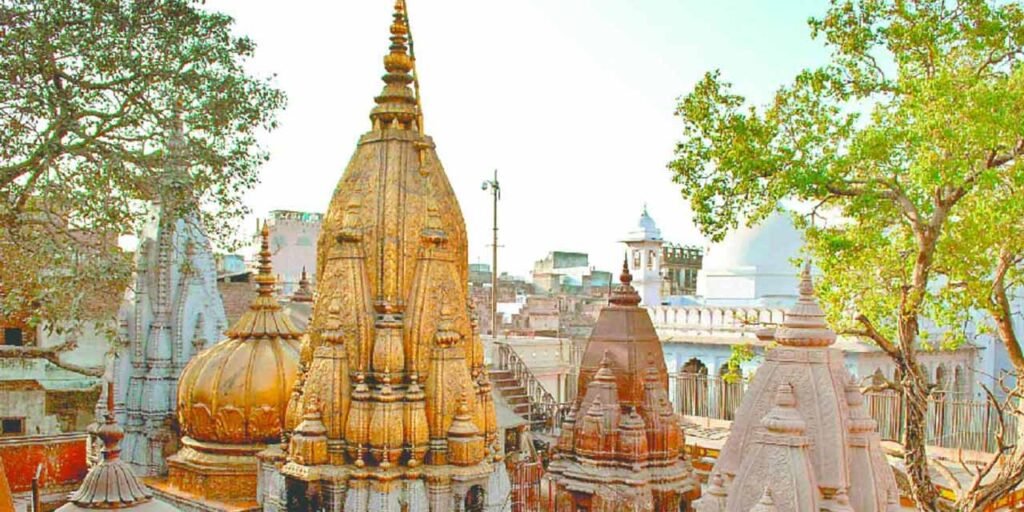
Religious Significance of Kashi Vishwanath Jyotirlinga
Kashi Vishwanath is cherished by all Shiva followers. This temple is regarded as the ultimate temple of Shiva, and it is said that coming here purifies the visitor from every sin that the person has earned in the world.
Moksha and Salvation: One narrates Keller that Varanasi is the only spot on the surface of this planet, where Lord Shiva himself leans over the dying, chanting awooshtas, a word for word pran in the doses required for enlightenment. That is why Kashi Vishwanath becomes a great shrine for those who want to be liberated from the bonds of this earthly life.
Ganga Aarti and Vishwanath Darshan: This temple visit is also rated with Ganga Aarti performed at Dashashwamedha Ghat. It is a widely held belief among devotees that taking a holy dip in the Ganga River before the temple visit heightens the religious significance of the temple.
Tourism at Kashi Vishwanath Jyotirlinga
Kashi Vishwanath Jyotirlinga is not limited only to the worship; it serves as an important hub for the spiritual pursuits and the tourists who want to immerse into the culture of Varanasi. Varanasi, from the cramped alleys of the old town to the steps by the Ganges, is endowed with a spiritual experience like no other.
How to Reach Kashi Vishwanath
1. By Air: The nearest airport is Lal Bahadur Shastri International Airport, which is located roughly 26 kilometers away from the downtown area. At the airport, taxis and auto-rickshaws can be found.
2. By Train: In Varanasi there are two primary rail terminals which are Varanasi Junction and Manduadih Railway Station, both of which have rails that link to other cities.
3. By Road: Varanasi is connected by road to all the other cities such as Lucknow, Allahabad, and Patna. Public and private bus services and taxis and cars are also available.
4. By Boat: You may go on a boat on the Ganges River, which is calm and peaceful and also gives a lovely view of the temple along the banks of the river.
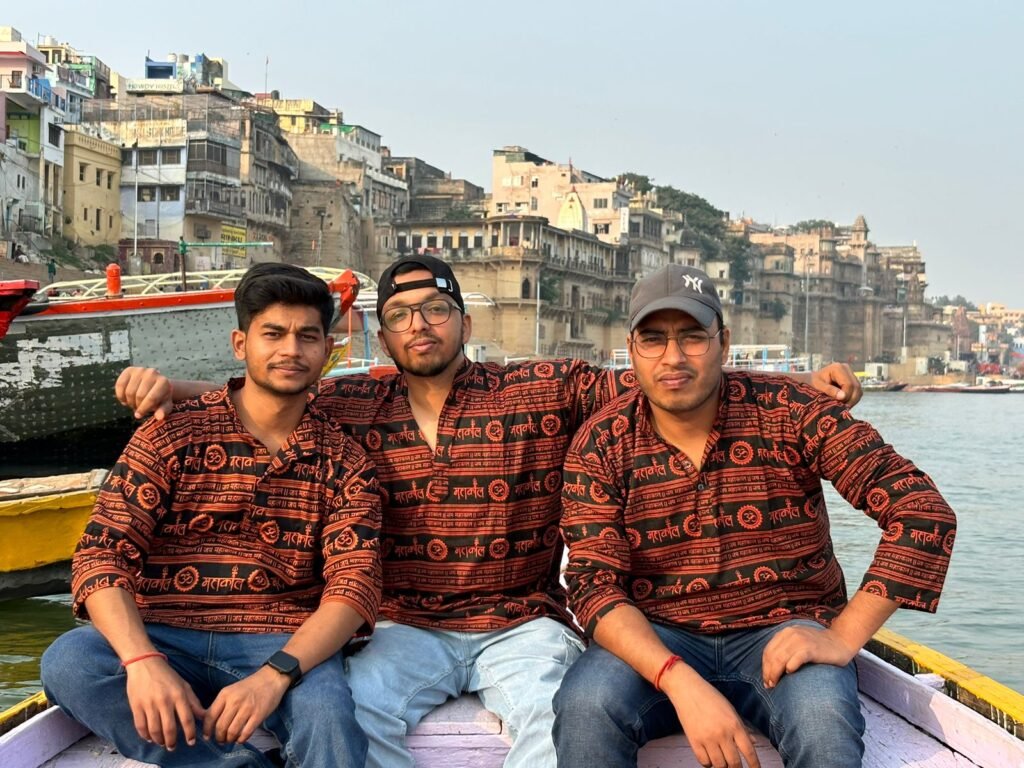
Best Time to Visit
The prime visiting time for the city of Varanasi is during the winter seasons lasting between October and March. The atmosphere is fairly cool and suitable for sightseeing and temple visiting purposes. Summers April to June may be very scorching hot while the June to September period is the rainy season that experiences very heavy downpours which makes travel quite troublesome.
Temple Timings and Darshan Information
The Kashi Vishwanath Temple remains accessible to devotees from the wee hours of the morning to the late hours of the night. It is to be noted that the temple also has systematised aarti timings which the visitors need to keep in mind particularly if they are interested in taking part in the practices.
Mangala Aarti: 3:00 AM – 4:00 AM (Requires a special ticket for entry)
Bhoj Shree Vishwanath Aarti: 11; 15 AM to 12.20 PM
Sandhya Aarti: 7 PM – 8.15 PM
Shringar/Bhog Aarti: 9 PM – 10.15 PM
Night Shayan Aarti: 10.30 PM – 11.00 PM
Best Time for Darshan: For a peaceful darshan with fewer crowds, visiting early in the morning (around 4 am after Mangala Aarti) or in the afternoon is advised.
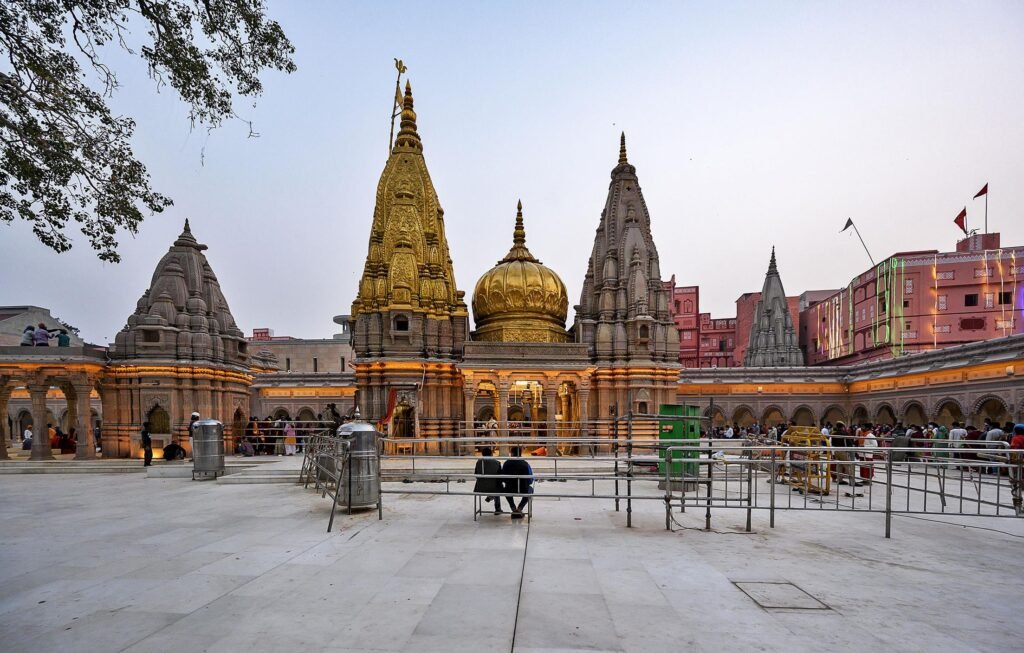
Special Events and Festivals
The experience of visiting the Kashi Vishwanath temple during festivals is not only lively but also full of spiritual vibrations. The temple becomes a center stage of action during:
Mahashivaratri: The grandest of all the festivals at Kashi Vishwanath is the wedding celebration of Lord Shiva and Goddess Parvati. The temple premises are adorned with beautiful decorations, and special ceremonies and processions are carried out.
Shravan Maas: The month of Shravan (July-August) is very important for worshippers of Lord Shiva. It witnesses thousands of pilgrims coming to the temple to perform jalabhishekam (offering of water) to the Jyotirlinga.
Dev Diwali: Dev Diwali, which means the Diwali of gods, comes 15 days after the festival of Diwali which is on the auspicious day of Kartik Purnima. The entire city of Varanasi on the eve of Dev Diwali is completely filled with the lights of small clay diyas (lamps). The ghats, temples, and the Kashi Vishwanath temple in particular are all brightly lit, adding to the spectacle.
Nearby Attractions
1. Dashashwamedh Ghat: This is the most famous ghat in Varanasi and is a place where Ganga Aarti is held every evening. It is so beautiful and spiritual that people come a lot to this place.
2. Manikarnika Ghat: While Maikarnika Ghat is one of the places of utmost devotion to Hindus, it has a viewing of life and death at work above all that—it is a cremation business nonstop, almost 24 / 7 on display.
3. Sarnath: Sarnath is a place located about 10 km outside Varanasi where Lord Buddha preached his first sermon after attaining the enlightenment. There are few stupas and museums worth visiting in this place.
4. Banaras Hindu University (BHU): Also known as the campus of Asia’s largest residential university, BHU encompasses the New Vishwanath Temple, which is a full-scale replica of the Kashi Vishwanath Temple.
5. Tulsi Manas Mandir: This temple dedicated to the Lord Rama is situated close to the renowned Durga Temple and is famous for the carvings found in the temple that are based on the Ramcharitmanas epic.
6. Bharat Mata Mandir: Distinct for its emphasis on Mother India, the temple has a big marble structure outlining the geography of India instead of visible deities.
7. Sankat Mochan Temple: The Hanuman Temple is another very famous temple in Varanasi. It is claimed that the people who come here and worship do not face any hurdles in life, which is why it is visited for prayers.
8. Alamgir Mosque: This mosque, which is at the river Ganga, is a true representation of the synthesis of Hindu and Islamic culture existing in the city. It was built by the Mughal Emperor Aurangzeb and is located in an area overlooking the river.
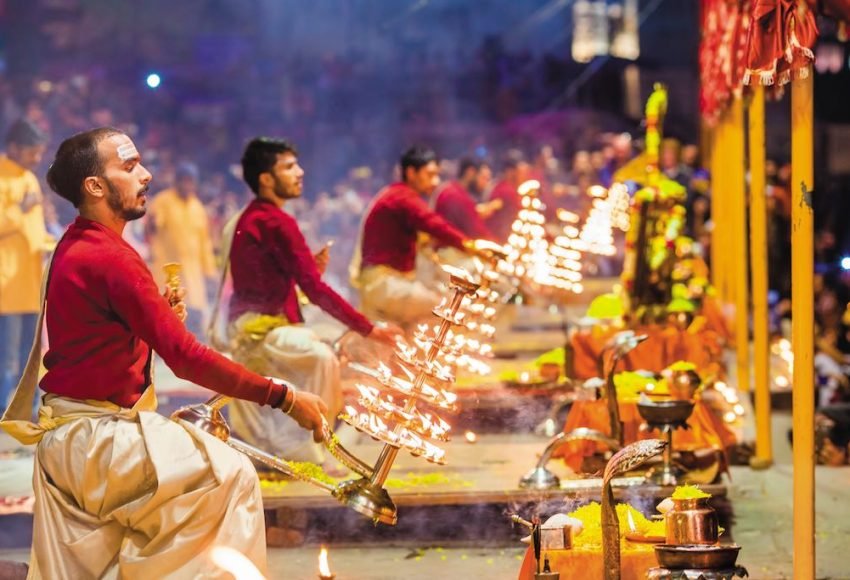
Significance of the Gyanvapi Well
Sitting next to the Kashi Vishwanath Temple is the Gyanvapi Well. This well is referred to as pious and is believed to have great religious importance. As per the tale, during the time when the temple was threatened to be destroyed by the outsiders, the original Jyotirlinga was buried in this well to keep it safe. At present, the well is within the temple premises and many devotees come here to pray.
Renovation and Kashi Vishwanath Corridor Project
In recent times, work has begun on the Kashi Vishwanath Corridor Project in order to enhance the facilities as well as the aesthetics around the temple area. In this regard, the temple’s adjoining pathways have also been extended considerably enabling the ease of access to the shrine by the devotees. The corridor leads from the temple to the Ganga River allowing the devotees with a provision to have a dip in the Ganges prior to going for darshan.
The temple has now been upgraded in its infrastructure with modern facilities and a cleaner environment which helps in managing the visitors in an orderly manner. The refurbished structure has also incorporated landscaping by the addition of viewing points for city as well as river scapes.
Food and Accommodation for Visitors
Varanasi offers multiple accommodation facilities to the visitors regardless of their financial standing. Tourists do not have to worry as there are basic pilgrim resthouses to five star hotels for them to choose as per their suitability. A few of the common ones entail:
Kashi Vishwanath Temple Dharamshala: A dharamshala built within the temple location that provides affordable accommodation mostly for pilgrims.
Taj Ganges: This is a high-end hospitality establishment that provides guests with modern facilities while at the same time appreciating the rich history of the city.
Suryauday Haveli: A Heritage Hotel situated on the banks of the river Ganga in Varanasi with more of spiritual and cultural ambiance.
Many visitors come to Varanasi for sightseeing, however, most of them are also pleased to enjoy the local cuisine. Instead, shop from the popular outlets and relish Mother’s pride Rabri Jalebi, Lassi, Kachori-Sabzi, and Banarasi Paan.
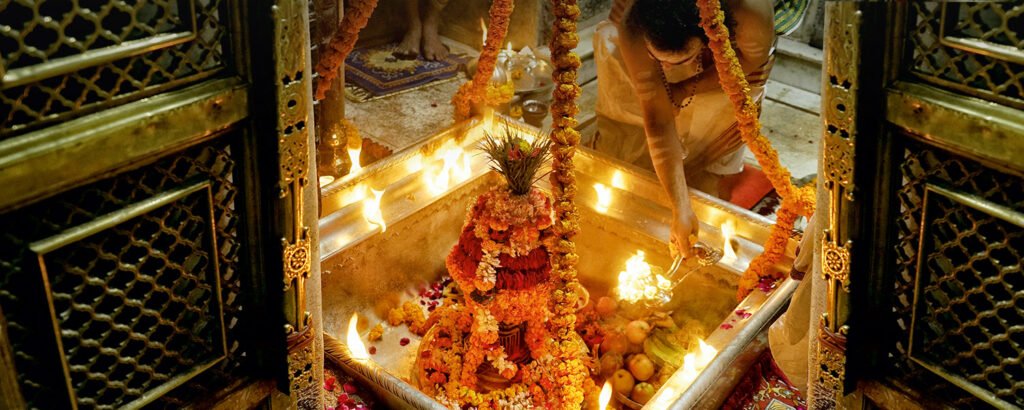
Kashi Vishwanath Temple Etiquette
When paying a visit to this holy site there are certain manners that must be observed:
1. Footwear and Leathers: Footwear, belts and other accessories made of leather are strictly prohibited inside the temple. Please take them off and place them in the proper place outside the temple.
2. Behavior Towards Local Traditions: One must always acknowledge the local beliefs and practices in the temple. Take and/or break any activity without permission of the priests and especially any cameras during work process.
3. Dinning Etiquette of the Temple: When entering the temple, one should preferably cover the body in traditional or conservative clothing. Nothing like shorts, sleevless tops, or any revealing clothes are encouraged.
4. Possession of Items: Try to expect security inspection when going inside the temple. High-tech devices such as mobile devices, cameras and bags are prohibited inside therefore it is wise to keep them in the hotel or in the temple’s safe keeper.
Tips for Travelers
1. Expect Long Queues: Kashi Vishwanath Temple regularly witnesses a hefty footfall, more so, during festivals and other religious activity. Therefore, an early morning visit can assist one in avoiding the long lines.
2. Dress Appropriately: This is a holy place, and thus one should take care how one dresses. For instance, do not allow for the wearing of cut off shorts or tops without sleeves, particularly when entering the temple.
3. Get Ready to Walk in Crowded Lane: The temple is in the center of the old city Varanasi and the lanes leading to the temple are quite small and packed. So be ready for a few more steps to reach the temple.
4. Do not Trust Street Vendors: The temple system is good, but there will be people who will offer to you in order to pay them to let you cut in the line. Do not pay any attention to these and do it the right way.
5. Bring Only What is Necessary: The temple is very secured with strict screening processes and restriction of some items like mobile phones and cameras from entering the shrine. Therefore, it is advisable to go with only the basics.
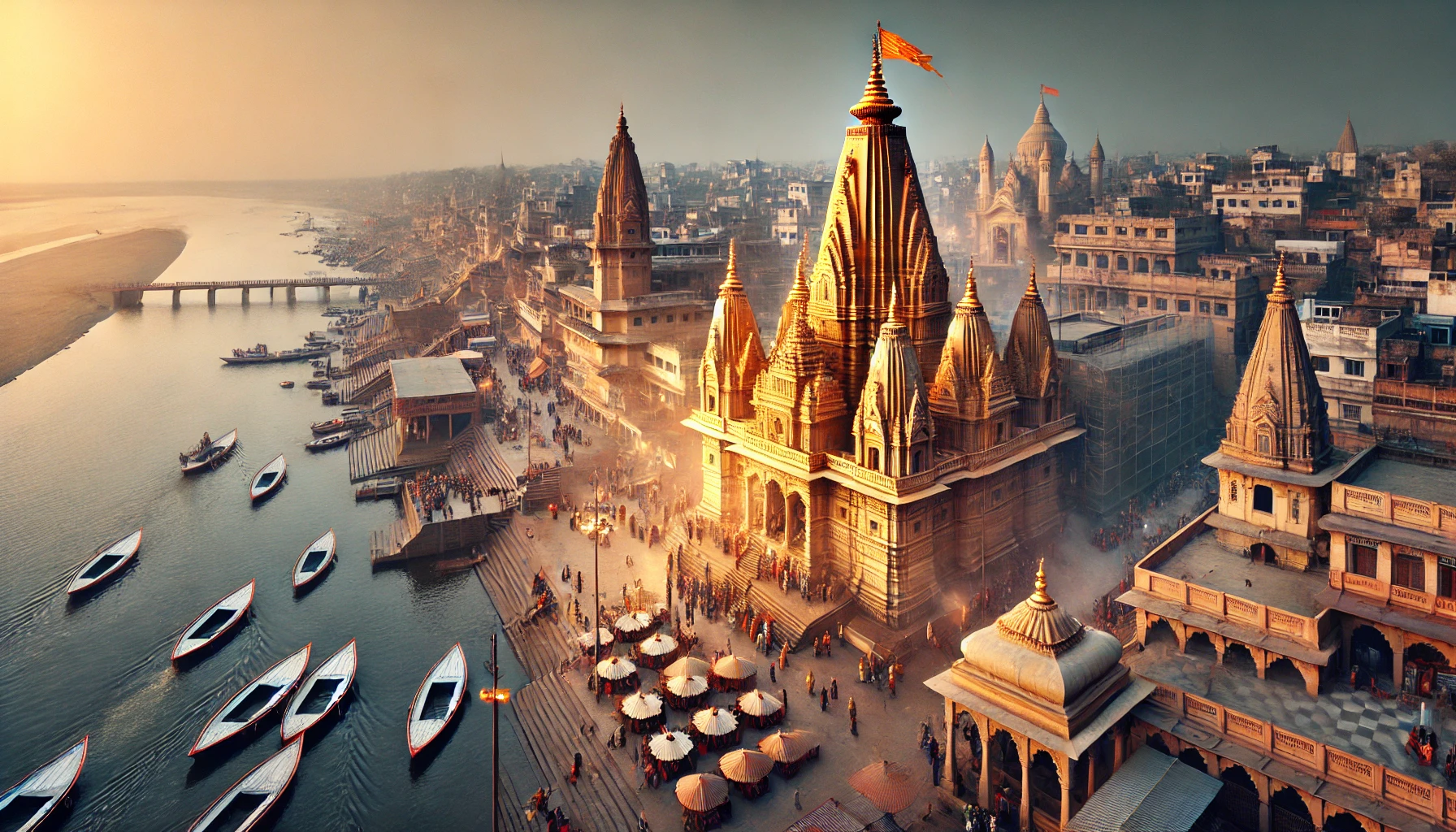









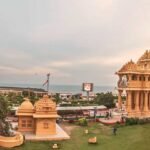

1 thought on “Kashi Vishwanath Jyotirlinga: The Spiritual Heart of Varanasi”